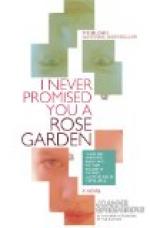[Illustration: MADAME PLANTIER AT VAN CORTLAND MANOR.]
Personally, I object to the rambler tribe of roses for any but large gardens, where in a certain sense the personality of flowers must sometimes be lost in decorative effect. A scentless rose has no right to intrude on the tender intimacies of the woman’s garden, but pruned back to a tall standard it may be cautiously mingled with Madame Plantier with good effect, lending the pale lady the reflected touch of the colour that gives life.
For the pergola a few ramblers may be used for rapid effect, while the slower growing varieties are making wood, but sooner or later I’m sure that they will disappear before more friendly roses, and even to-day the old-fashioned Gem of the Prairies, Felicite Perpetual, and Baltimore Belle seem to me worthier. Colour and profusion the rambler has, but equally so has the torrent of coloured paper flowers that pours out of the juggler’s hat, and they are much bigger.
No, I’m apt to be emphatic (Evan calls it pertinacious), but I’m sure the time will come when at least the crimson rambler, trained over a gas-pipe arch, except for purely decorative purposes, will be as much disliked by the real rose lover as the tripod with the iron pot painted red and filled with red geraniums!
The English sweetbrier is a climbing or pillar rose, capable of being pruned into a bush or hedge that not only gives fragrance in June but every time the rain falls or dew condenses upon its magic leaves. This you must have as well as some of its kin, the Penzance hybrid-sweetbriers, either against the pergola or trained to the corner pillars, where you will become more intimate with them.
You may be fairly sure of success in wintering well-chosen hybrid perpetual roses and the hybrid teas. If, for any reason, certain varieties that succeed in Lavinia Cortright’s garden and ours do not thrive with you, they must be replaced by a gradual process of elimination. You alone may judge of this. I’m simply giving you a list of varieties that have thriven in my garden; others may not find them the best. Only let me advise you to begin with roses that have stood a test of not less than half a dozen years, for it really takes that long to know the influence of heredity in this highly specialized race. After the rose garden has shown you all its colours, it is easy to supplement a needed tint here or a proven newcomer there without speculating, as it were, in garden stock in a bull market. Too much of spending money for something that two years hence will be known no more is a financial side of the Garden-Goozle question that saddens the commuter, as well as his wife. It is a continual proof of man’s, and particularly woman’s, innocency that such pictures as horticultural pedlers show when extolling their wares do not deter instead of encouraging purchasers. If the fruits and flowers were believable, as depicted, still they should be unattractive to eye and palate.




